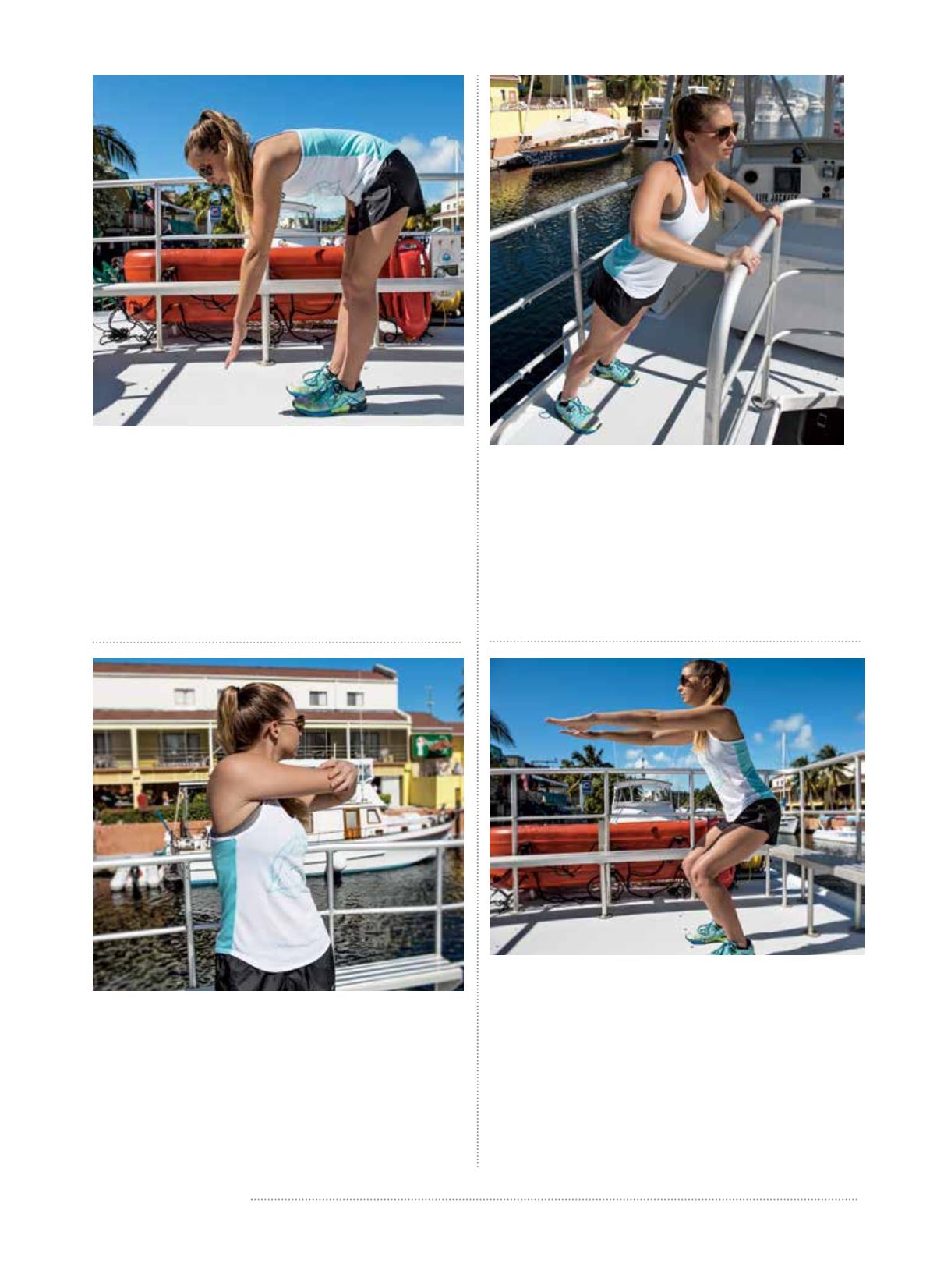
 ALERTDIVER.COM
ALERTDIVER.COM
|
35
HANGING ARM CIRCLES
Rotator-cuff issues are a common ailment as we age. Activation of
the rotator muscles prepares the shoulder for action and increases
joint mobility.
1. Bend over at your waist while maintaining a flat back.
2. Let one arm hang freely, and rotate it 30 times clockwise and
30 times counterclockwise, gradually increasing the size of
your circles.
3. Use the other hand to brace yourself, if necessary.
4. Switch arms after two to four sets.
STANDING OR SEATED TRUNK TWISTS
Lower-back tightness is a common cause of back problems, so
warm up prior to donning heavy dive gear.
1. Begin with a tall spine while either standing or sitting.
2. Cross your arms in front of you like a genie.
3. Slowly rotate to your right, hold this position for a two count,
and return to center.
4. Repeat to the left.
5. Move smoothly, and maintain control.
WALL PUSH-UPS
Push-ups are excellent for activating the major muscles of the
upper body.
1. Stand facing a wall or a solid object at chest height.
2. Extend your hands straight toward the wall with your palms
flat and fingers facing up.
3. Lower your chest toward the wall, hold this position for a
two count, and slowly push away.
4. Perform 10-15 repetitions.
SQUATS
Squats activate all the major muscles and joints of the lower body
including the ankles, knees and hips.
1. Begin with your feet slightly wider than shoulder width.
2. Push your hips back while maintaining a flat back.
3. Lower your hips as if sitting down, and keep your knees from
traveling forward of your toes.
4. Once you reach a comfortable seated position, stand up,
pushing your hips forward.
Tip:
Keep your heels on the floor at all times.
Do squats only in calm seas.
AD
NOTE: To avoid an increased risk of decompression sickness, DAN
®
recommends that divers avoid strenuous exercise for 24 hours after making a dive.
During your annual physical exam or following any changes in your health status, consult your physician to ensure you have medical clearance to dive.
















